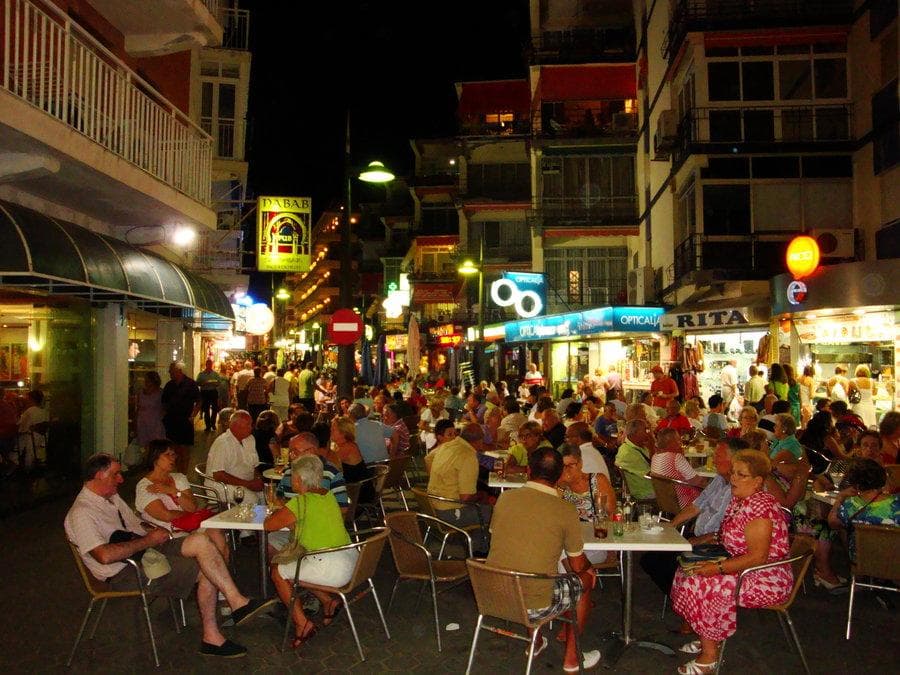(#2) Sweden
- Stockholm
Total Population: 10.2 million
First Case: Jan. 31, 2020. Sweden reported its first official case of the novel coronavirus early in the epidemic. However, Sweden took a different approach than other countries.
Initial Reaction: Sweden chose not to close its borders or shut down major sectors of the economy in response to coronavirus. “Closing borders at this stage of the pandemic, when almost all countries have cases, to me does not really make sense,” said Anders Tegnell, the state epidemiologist.
By late March, Sweden did limit gatherings of more than 50 people.
“For us, a total lockdown is a disaster,” hotelier Elisabeth Hatlem says. “But I am worried Sweden will explode at some point. I feel like I’m living in a huge experiment, and I was never asked if I wanted to sign up.”
(#15) Spain
- Madrid
Total Population: 50 million
First Case: Jan. 31, 2020. The first case in Spain came from a German tourist visiting the Canary Islands.
Initial Reaction: For nearly a month, Spain's only cases were in its island territories. But on February 26, the country reported positive cases in Madrid and Barcelona. Throughout February and into March, Spain did not use tracing technology to track COVID-19 cases.
In the first half of March, Prime Minister Pedro Sánchez allowed large soccer games to take place and did not stop a 120,000-person rally in Madrid. The country implemented a lockdown on March 14 - the same day the prime minister's wife tested positive for COVID-19. Authorities set up 30,000 roadblocks to limit travel and began fining people for going outside without a good reason.
On April 13, Spain began easing their lockdown. It was estimated about 300,000 nonessential workers returned to work. Despite easing the lockdown, it did not mean the country was free of the virus. The government began distributing masks in train stations, metro hubs, and other public locations in order to minimize any resurgence.
(#5) China
- Beijing
Total Population: 1.39 billion
First Case: Jan. 7, 2020. In late December 2019, China first reported cases of pneumonia seemingly linked to the Huanan Seafood Wholesale Market located in Wuhan. By Jan. 7, they found that the outbreak was due to COVID-19. On Jan. 11, China reported its first death from novel coronavirus.
Initial Reaction: On Jan. 23, China ordered a lockdown of Wuhan, the epicenter of the outbreak, and other cities in Hubei province. The move quarantined at least 50 million people.
China built two new hospitals to handle overflow cases, completing them in just over one week. In Wuhan, the government prioritized contact tracing, creating over 1,800 teams dedicated to tracing contacts with infected individuals. Chinese authorities also used mobile apps to track people's movements and enforce travel restrictions. Drones monitored the streets, enforcing orders to wear a mask at all times and ordering people to go home.
After reporting a dramatic decrease in the number of cases China lifted their lockdown of Wuhan on Apr. 8. Wuhan Epidemic Control Official Luo Ping, however, said that opening the city "does not mean the all-clear, neither does it mean a relaxing of epidemic prevention and control measures"
(#8) Japan
- Tokyo
Total Population: 125.5 million
First Case: Jan. 14, 2020. Japan's first confirmed case of COVID-19 was a man in his 30s who had recently traveled to Wuhan.
Initial Reaction: On February 3, Japan stopped admitting people who had traveled to Hubei province. Japan instituted strict testing criteria, only offering tests to those with a fever lasting more than four days or who had other health vulnerabilities. Rather than imitating the widespread testing done in South Korea, Japan tested a small number of people most likely to have the disease.
On February 27, 2020, Prime Minister Shinzo Abe shut down public schools, and the government encouraged people to socially distance.
In contrast to the widespread closures in the US and Europe, Japan advised people to “continue to avoid environments that simultaneously meet the following three conditions: poor ventilation, dense crowds, and dense conversation.”
Though the number of confirmed cases has been relatively low compared to Europe and the US, the government fears that a potential surge in cases could overwhelm the country's healthcare system. On April 7, Abe declared an official state of emergency. In his televised speech to the nation, Abe announced that law enforcement will be given the authority to expropriate land for medical facilities and force companies to sell medical supplies and necessary resources if public health demands it.
The Prime Minister, however, made it clear that the state of emergency is not a lockdown. "Public transport will run as usual, and no roads will be closed," he said. "There is no need for that. That is the view of the experts."
(#14) Germany
- Berlin
Total Population: 80 million
First Case: Jan. 26, 2020. The first German cases appeared in Bavaria, beginning with a Chinese woman who came to visit a branch of the corporation she worked for.
Initial Reaction: In response, Germany focused on testing. Early testing and contact tracing helped Germany control the spread of the disease.
By March 15, Germany had performed 167,000 tests. The government barred visitors for elderly residents and encouraged self-quarantine. The country also banned all gatherings of more than two people and closed schools and nonessential businesses.
(#9) Iran
- Tehran
Total Population: 84.9 million
First Case: Feb. 19, 2020. Iran reported its first two deaths from coronavirus before reporting a single case. The outbreak began in Qom, a major pilgrimage destination.
Initial Reaction: In late February, the deputy health minister, Iraj Harirchi, declared, "Quarantines belong to the Stone Age." The next day, he tested positive for COVID-19.
Iran kept shrines and religious sites open through February. Many leaders and lawmakers tested positive for the disease, including dozens of members of Parliament. The government insisted that the outbreak was not a major problem. Reports claimed that security agents were actively suppressing information about COVID-19 fatalities.
In mid-March, Iran temporarily released 85,000 prisoners to stop the spread in jails.
In late March, with official case numbers at 15,000, an Iranian doctor told Time, “There is absolutely no doubt that the number of sick people is much higher. Realistically, at this point, you need to change the reported sick cases to 1 million.”
New Random Displays Display All By Ranking
About This Tool
The COVID-9 epidemic is spreading all over the world, the infection rate of countries fluctuates, and the epidemic prevention measures continue to be strict. It is obvious that by analyzing the response policies of various regions, other countries can learn some useful information from them. Every country has different attitudes and responses to Covid-9, a positive and efficient response is obviously effective in controlling the epidemic.
If you are also interested in the responses from other countries around the world, welcome to check the random tool to watch some videos and get more detailed information about the epidemic in 16 different countries.
Our data comes from Ranker, If you want to participate in the ranking of items displayed on this page, please click here.
















